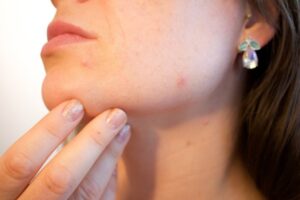If you have been suffering, you may be at your wit’s end. Hip Pain caused by Osteoarthritis can affect almost all areas of a person’s life, making it difficult to perform the most mundane tasks, from putting on your shoes to getting out of a car.
If you are otherwise fairly healthy, this can be especially frustrating. You want to be active as you always have been, and yet your hip is holding you back.
Unfortunately, many people may not realise they are suffering from Hip Osteoarthritis at first since symptoms can be sporadic. Furthermore, sometimes your brain will signal pain in your knee rather than the hip where the problem is, due to the ‘wiring’ that transmits pain signals, making early-onset Hip OA even more difficult to recognise.
Osteoarthritis of the Hip is progressive, painful, and debilitating. If you think you may be suffering from it, it is absolutely crucial that you receive an accurate diagnosis and begin effective treatment as soon as possible.

Table of Contents
What is Hip Osteoarthritis?
Osteoarthritis is a degenerative disease affecting the joints. For the most part, OA affects the cartilage, but it can also damage the underlying bone.
- Slippery tissue that protects your hip joint cartilage gradually breaks down.
- Lubricating fluid that cushions your joints (synovial fluid) disintegrates, weakening your hip’s capacity for shock-absorption. When this begins to occur, the joint impact from movements such as walking or running can become painful.
- Bones may begin to rub against each other; creating pain, stiffness, and a reduction in your range of movement.
Hip Osteoarthritis Symptoms and Treatments
Osteoarthritis of the Hip creates difficulty in hip joint movement. Osteoarthritis can be suffered in either one hip or both. The problem usually develops slowly, worsening as time passes – so you will probably notice a change in the severity of your symptoms, which can include:
- Pain or a feeling akin to grating when you move. You may even experience pain while you are resting.
- A stiff sensation after you’ve been sitting or lying still for some time
- Joint swelling – perhaps also a more ‘knobbly’ appearance to your joints.
- A lower range of functioning and movement capability
Stages of Hip Osteoarthritis
Osteoarthritis of the Hip can be classified in various ways. Some doctors grade it on a scale from 1 (mild) to 4 (severe). Others use the classifications simply mild, moderate, and severe.
In mild Hip Osteoarthritis, your hip joint cartilage will have begun to wear away slightly. You will start experiencing pain during exercise at all the times, and stiffness after you wake up.
If you have moderate Hip Osteoarthritis the cartilage in your hip joint will be wearing away further. Your joint fluid may be less and less substantial in its ability to lubricate and cushion your hip. Movement may be painful. You may also spot bony growths or spurs on your hip bone.
With severe Hip OA your cartilage may be completely worn down, leading to the rubbing of your bones against each other. Pain is probably severe and continuous now. Conducting simple everyday tasks and moving around will be more and more bothersome.
What causes Hip Osteoarthritis?
Osteoarthritis has no one single cause. But experts have identified a number of factors that can increase your risk of developing the condition. For instance:
- Age: As you get older, your chances of developing OA increase
- Weight: If you are carrying significant extra bodyweight you are at greater risk because excess weight strains your joints.
- Gender: Women suffer OA more often than men.
- Heredity: Your genetic makeup can have a bearing on your joints’ shape and stability. In fact, many experts on Osteoarthritis believe that it runs in families
- Past injury: If you have ever suffered an injury to your hip, either through impact or overuse, you are more at risk of developing Hip OA
Diagnosis and Treatment for Hip Pain
When it comes to Osteoarthritis, treatment plans will always include some form of exercise, and perhaps change of diet, even alongside pharmacological solutions.
Unfortunately, many early-onset OA sufferers are unaware they have the disease, or they may have received an incorrect diagnosis. This is extremely problematic because OA is progressive, and if left unchecked can cause greater and greater restrictions to a person’s quality of life. These sufferers may proceed to suffer Hip Pain in silence, perhaps regularly taking oral painkillers for lengthy time periods; which can pose a serious risk to gastrointestinal health.
In a similar vein, steroid injections (for example Cortisone), while useful in helping to reduce joint pain and inflammation, are associated with serious side effects when taken repeatedly; for example damage to the cartilage.




